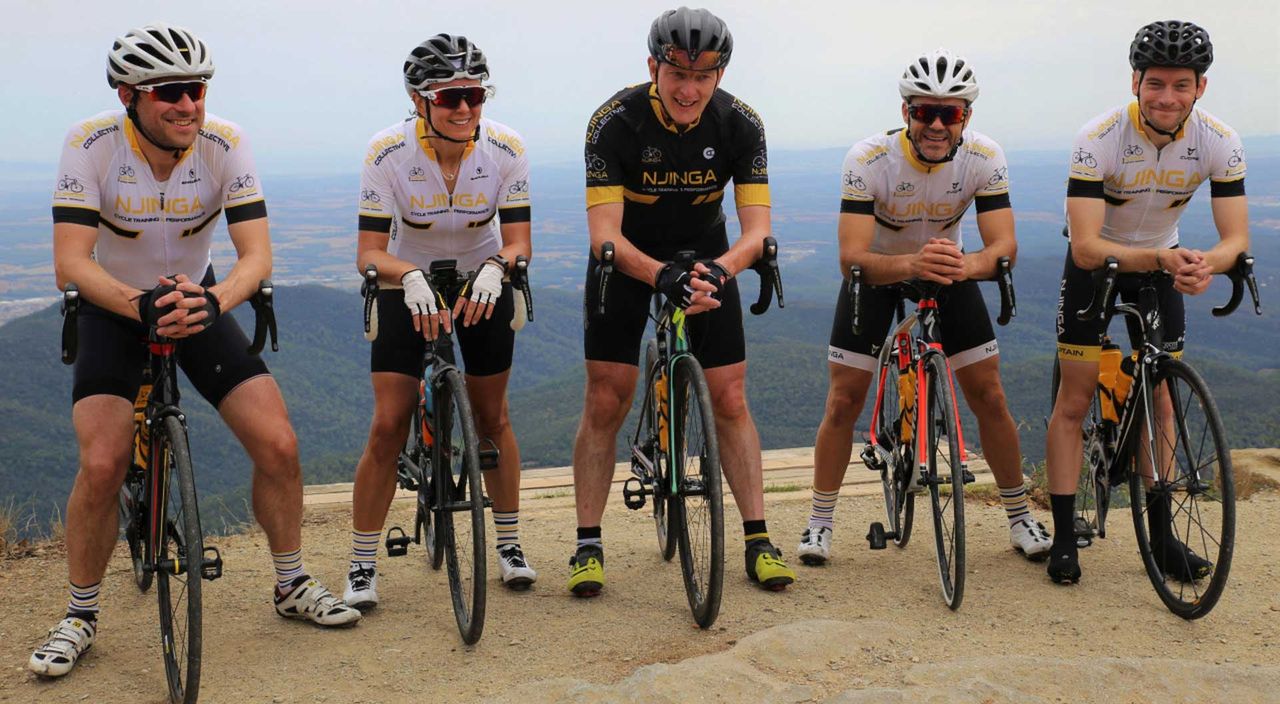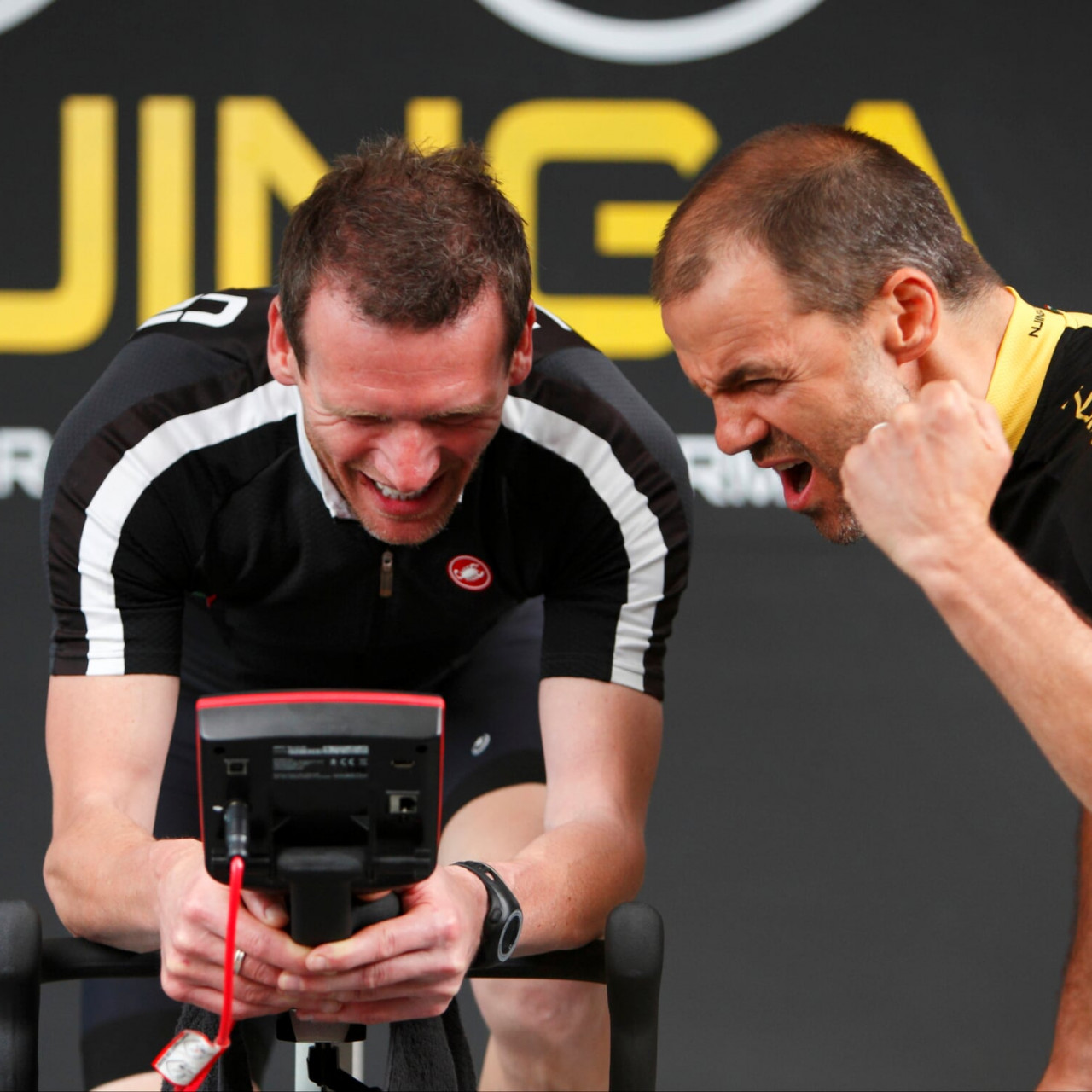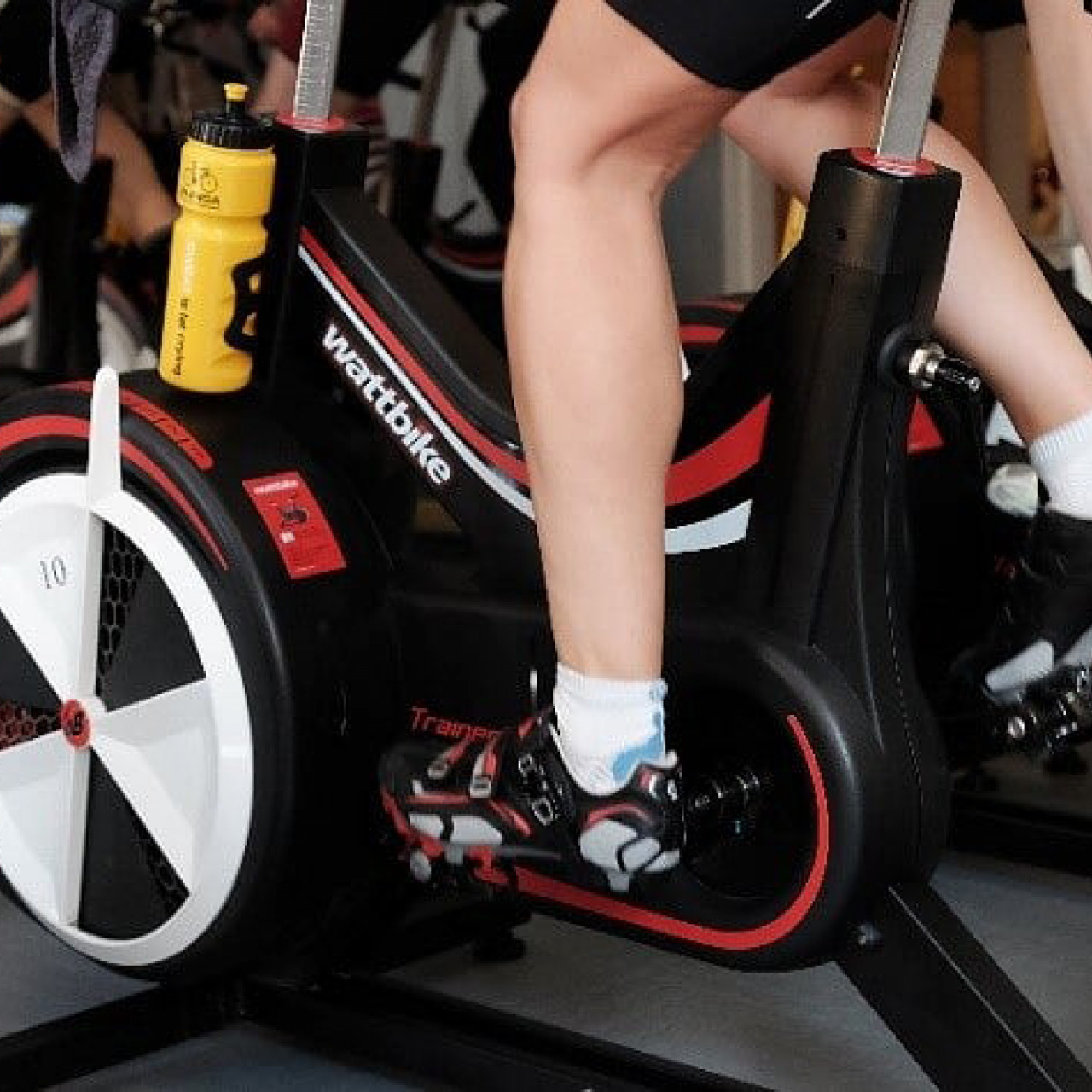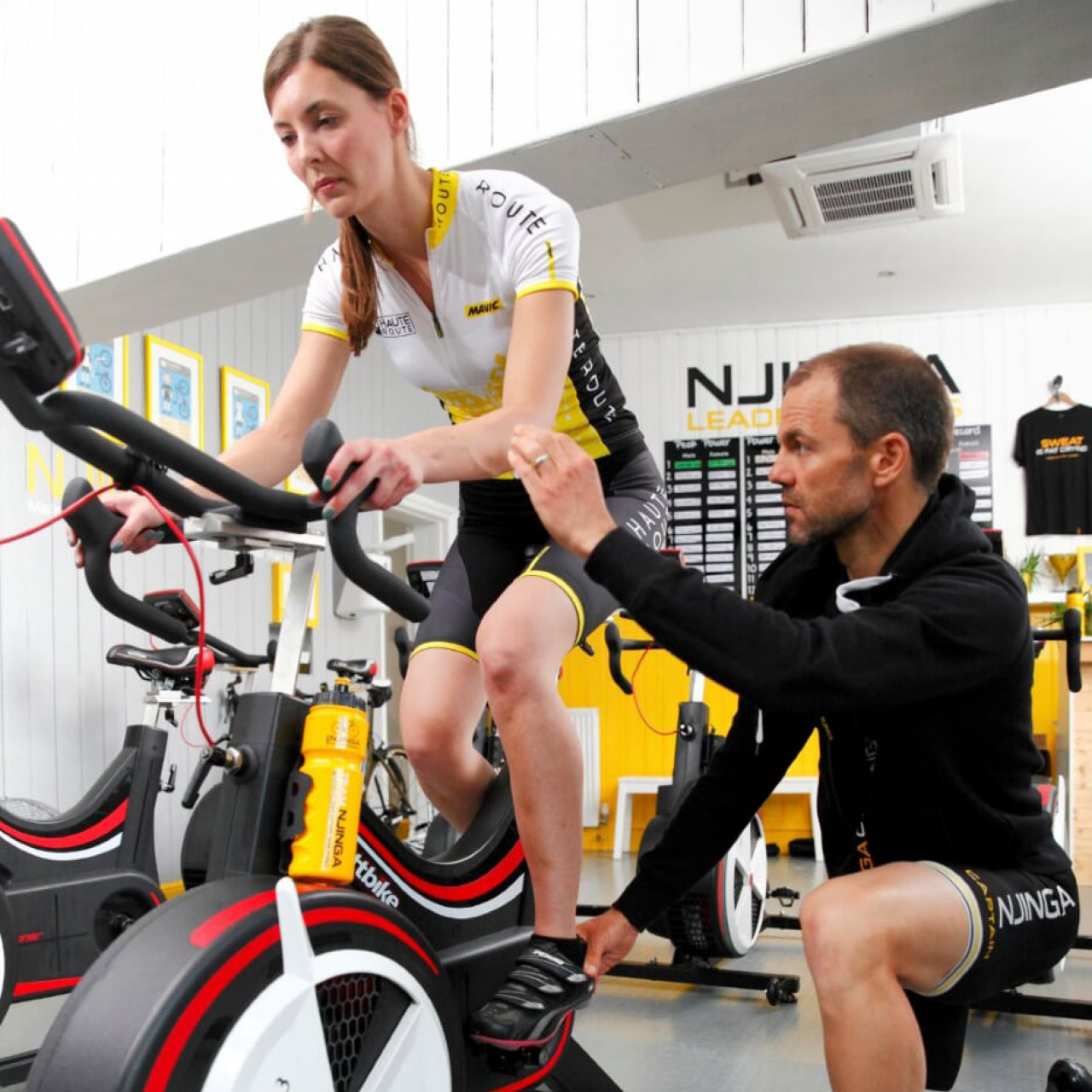
Cycling Glossary
New to cycling or not sure of all the cycle specific terminology?
If you're ever unsure about any of the terminology we use here at Njinga Cycling, refer to the glossary below.
Baby Pro: This shape indicates a correct pedalling technique with all the correct muscles being activated, however, the rider is not completing a full revolution of the pedal during each stroke. This is a result of the rider not going to their full extremities with each pedal revolution and therefore not able to achieve their maximum power output.
Cadence: The number of times during one minute that a pedal stroke is completed. Also called pedal rpm.
Cleat: A metal or plastic fitting on the sole of a cycling shoe that engages the pedal.
Elephant Balls: The shape indicated by a lack of pedal momentum as a cyclist switches between extending with their left and then their right leg. This shape will be created when a rider is only using their quadriceps and therefore is only applying downward pressure on the pedals. This pedalling technique wastes a lot of energy as to ride at the same speed as an efficient cyclist, they would have to produce more power.
FTP: FTP stands for Functional Threshold Power and is a simple way to measure your current cycling fitness levels. FTP is measured in watts and is the maximum average power you can sustain for 60 minutes or 95% of your average power for a 20 minute test.
Indoor Training Sessions: Our structured training sessions that are specifically designed for cyclists and involve various endurance, power and speed work to help improve stamina for longer rides, strength for climbing and power to sustain peloton surges or breakaways.
Italian Stallion: This shape indicates a perfect pedalling technique. The large rounded shape shows a consistent pedal stroke where the rider is activating all the correct muscle groups and also able to maintain a good momentum throughout the transition between legs.
NPE: Stands for Njinga Perceived Effort level and is the 1-10 scale used to measure the intensity of your exercise. Each number relates to the descriptions or feelings used to rate how easy or difficult you find the activity you’re doing. 1 being easy and 10 being difficult.

Pedal Technique: How you apply force throughout the pedal stroke. Analysis can determine any imbalances between your left and right leg distribution of power and any flat spots in your pedal stroke.
Power: The combination of speed and strength. Measured in Watts.
Power Meter: A device fitted on a bike that measures the power output of the rider.
Speed: The ability to accelerate quickly and maintain a very fast cadence for brief periods.
Sportives: Organised mass participant cycling events that involve completing a set route. Typically, there will be a short, medium and long route option at each sportive.
Training Zones: Training zones are individual to everyone and the different zones give an indication of effort levels and workout intensities. You can establish training zones for both power and heart rate off the back of completing an FTP test.
Wannabe Sausage: This shape shows a cyclist is losing a noticeable amount of momentum between each leg drive as they are applying pressure through the pedals from approximately 80% quadriceps activation and only 20% hamstring activation. This pedalling technique is wasting power as it is not providing an effective transition between the left and right leg.
Watt: A measurement of power produced. It tells how much force is applied to the pedals.
Wattbike: The wattbike is a power based indoor trainer with unsurpassed accuracy measuring cycling metric including power, cadence, heart rate and pedalling efficiency.
"Ride as much or as little, as long or as short as you feel. But ride!"
-Eddy Merckx
If you liked this, you may also like:
WHAT DOES YOUR PEDAL TECHNIQUE SAY ABOUT YOUR CYCLING?
Once you have learnt to ride a bike, pedalling becomes second nature to you. However, when was the last time you really considered how you pedal? Have you ever thought about what your pedalling technique shows you about the way you cycle or ultimately how your pedalling technique can affect your cycling performance?



